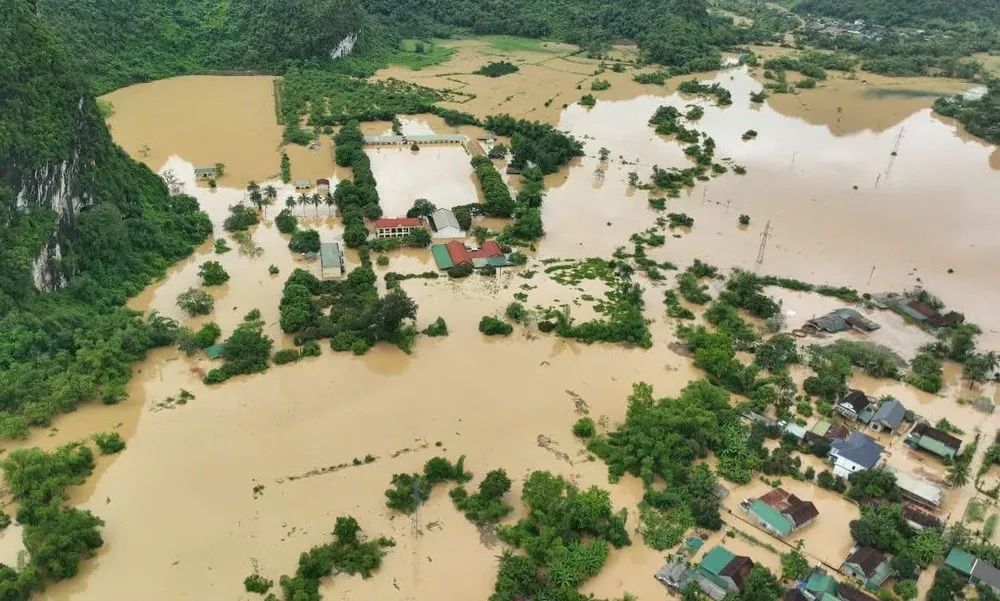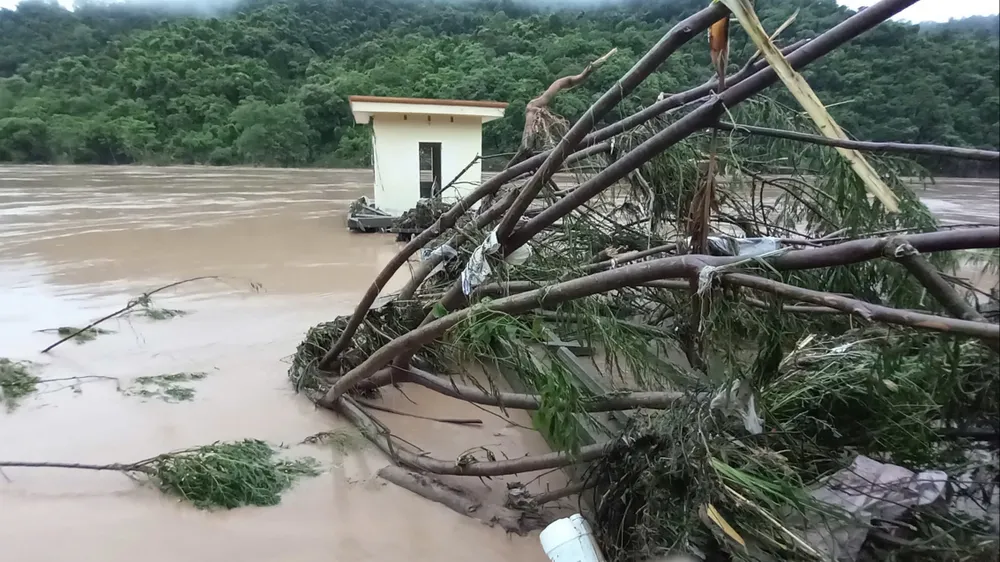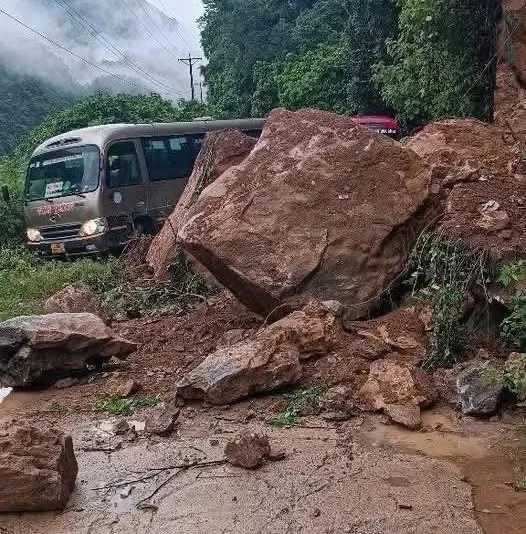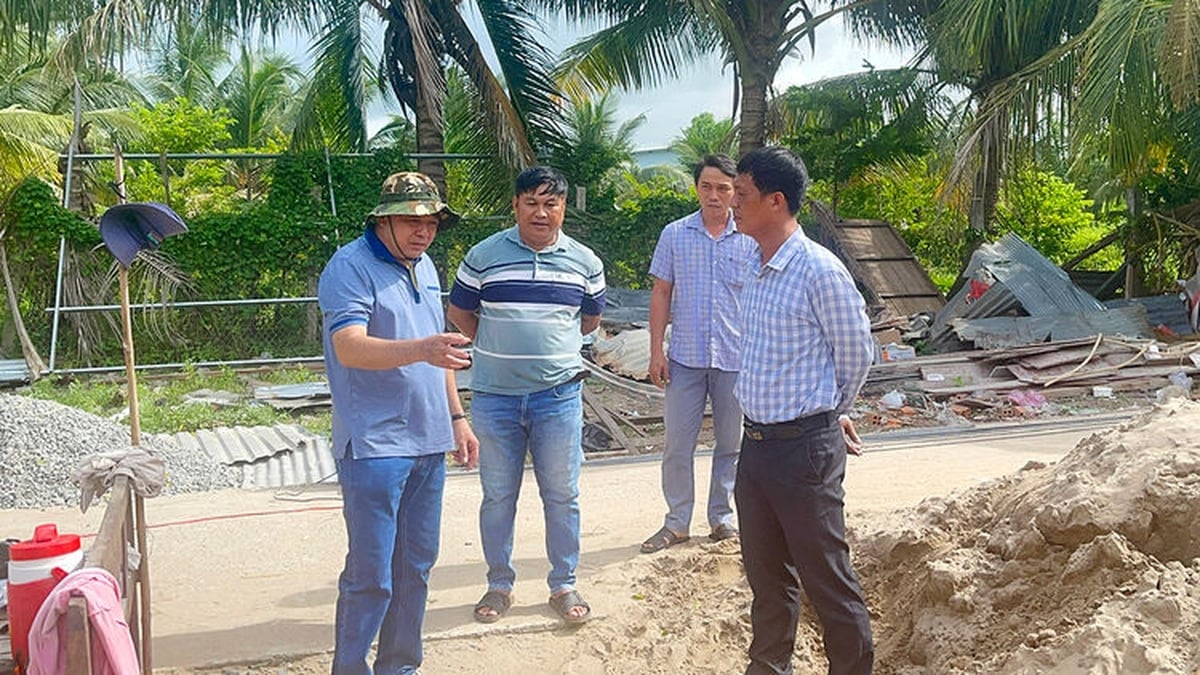According to the report of the Ministry of Agriculture and Environment , there are 6 lessons learned from recent disaster response practices.
Tuong Duong ( Nghe An province) was devastated after the historic flood caused by storm No. 3 (Wipha). Photo: Social Network
Firstly, in natural disaster prevention, the role of forecasting and warning is particularly important. Information needs to be provided early, from a distance, promptly and accurately so that people and authorities can proactively respond and minimize damage.
Second, leadership and direction must be closely aligned with the actual situation, focused, decisive, and willing to take responsibility. This is a decisive factor in organizing effective responses, especially to complex and unusual natural disaster situations.
Third, the goal of protecting the lives, health and property of the people and the State must be put first and foremost. All actions and plans for natural disaster prevention must be people-centered and must protect the safety of the community.
Fourth, it is necessary to mobilize all resources of society and the State, effectively implementing the "4 on-site" motto to ensure timely response in all emergency situations.
Fifth, we must attach importance to information and communication work. Providing complete, accurate and timely information along with disseminating response skills will help people raise awareness, proactively prevent and minimize damage.
Sixth, the historic flood after storm No. 3 ( Yagi ) in 2024 is a warning lesson for localities in exploiting and using river banks. Uncontrolled construction, farming and residential activities in the banks have increased the risk of natural disasters and need to be reviewed and adjusted soon.
Thach Giam hydrological station (Nghe An province) this morning, July 24. Photo: HOAI LINH
The Ministry of Agriculture and Environment also acknowledged that there are still many shortcomings and limitations in natural disaster prevention. Human and economic losses are still very large. Compliance with warnings is still negligent in some places. Rescue equipment is lacking, especially in remote areas. Construction systems and infrastructure such as dykes, electricity, and telecommunications are vulnerable.
In addition, many localities’ disaster prevention plans have not been updated and are not realistic. Forecasting for extreme natural disasters such as localized heavy rains, flash floods, and landslides is still limited, lacking detailed risk warning maps for each area.
According to statistics compiled by the Ministry of Agriculture and Environment, in 2024, natural disasters occurred frequently, extremely, and fiercely across the country. In total, there were 10 storms, 1 tropical depression, 240 heavy rains, 278 thunderstorms, 409 landslides, 472 earthquakes, along with cold spells, heat waves, droughts, and saltwater intrusion.
A large rock fell onto the road in Da Bac (Phu Tho province) on the morning of July 24. Photo: Contributor
The damage caused by natural disasters is very serious: 519 people died and went missing (more than 3 times higher than in 2023), economic damage of more than 91,622 billion VND (nearly 10 times higher than the previous year).
Storm No. 3 (Yagi) alone was the strongest storm in 70 years, causing historic floods in the North and Thanh Hoa, killing 345 people and causing nearly 84,544 billion VND in damage. This was the biggest loss in many years.
ANGEL
Source: https://www.sggp.org.vn/6-bai-hoc-lon-rut-ra-tu-thien-tai-post805260.html






































































































Comment (0)